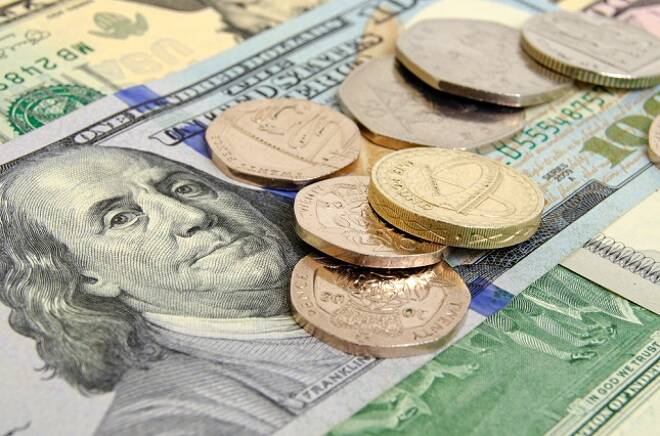Advertisement
Advertisement
Economic Data Puts the Pound in Focus as the RBNZ Talks of Negative Rates
By:
It's a busy day ahead on the economic calendar with the Pound in the spotlight. 2nd quarter GDP and industrial production figures will be the key drivers.
Earlier in the Day:
It’s was a busy start to the day on the economic calendar this morning. The Kiwi Dollar and the Aussie Dollar were in action in the early part of the day.
Away from the economic calendar, updates on the U.S stimulus package remained an area of focus.
On the geopolitical risk front, rising tension between the U.S and China continued to deliver the markets with uncertainty.
For the Aussie Dollar
In August, the Westpac Sentiment index fell by 9.5% to 79.5. In July, the index had fallen by 6.1% to 87.9.
Negative sentiment towards the reintroduction of lockdown measures in Victoria and COVID-19 hotspots in NSW weighed.
In NSW, sentiment slumped by 15.5%, while falling by a more modest 8.3% in Victoria.
According to the latest Westpac Report,
Looking at the sub-components:
- The economy, next 12-months sub-index fell by 19.2% to 53.6, with the time to buy a major household item falling by 13.2%.
- Time to buy a dwelling fell by 4.3%, reversing a 4.1% rise in July, with the House Price Expectations Index sliding by 16.2%.
- Family finances vs a year ago fell by 0.4% to 78.6, while family finances the next 12 months fell by 7.3% to 91.1.
- The economy next 5-years declined by 8.7%, while the Unemployment Expectations Index increased by 14.6% to 163.4.
The Aussie Dollar moved from $0.71412 to $0.71340 upon release of the figures.
In the 2nd quarter, wages grew by 0.2%, quarter-on-quarter, falling short of a forecasted 0.3% rise. In the 1st quarter, wages had grown by 0.5%.
According to the ABS,
- Wages grew by 1.8% over the year, marking the lowest annual growth in the 27-year history of the data series.
- The decline was attributed to the COVID-19 shutdown.
- Public sector wage growth picked up to 0.6%, while private sector wage growth eased to just 0.1%.
The Aussie Dollar moved from $0.71437 to $0.71332 upon release of the figures. At the time of writing, the Aussie Dollar was down by 0.34% to $0.7119.
For the Kiwi Dollar
The RBNZ left interest rates unchanged at 0.25% this morning, which was in line with market expectations.
While the RBNZ held rates steady, the Bank expanded the Large-Scale Asset Purchase Programme (“LSAP”) to NZD100bn.
There was also an announcement of further additional monetary policy instruments down the road, including the possibility of negative rates. The RBNZ also talked about the possible purchases of foreign assets as an option.
Other salient points from the RBNZ Rate Statement included:
- In recent months, New Zealand had contained the spread of COVID-19 locally, allowing the relaxation of social restrictions and a recovery in economic activity.
- Recent indicators highlight that the faster return to social norms and a higher proportion of employees working from home has seen output and employment recover sooner than projected.
- However, the severe global economic disruption caused by the pandemic is persisting. Any significant change in the global and domestic outlook remained dependent upon the containment of the virus.
- Such uncertainty is stifling household and business spending appetites, as highlighted in confidence surveys.
- Given the ongoing health uncertainty, there remains a downside risk to the RBNZ baseline economic scenario.
- There will be a transition of government policies near-term, the announced end of the Wage Subsidy will likely coincide with a decline in employment.
The Kiwi Dollar moved from $0.65669 to $0.65507 upon release of the monetary policy statement and rate statement. At the time of writing, the Kiwi Dollar was down by 0.46% to $0.6547. Next up, the RBNZ press conference.
Elsewhere
At the time of writing, the Japanese Yen was down by 0.22% ¥106.72 against the U.S Dollar.
The Day Ahead:
For the EUR
It’s a relatively quiet day ahead on the economic calendar. The Eurozone’s industrial production and finalized July inflation figures for Italy are due out.
Expect the inflation figures to have a muted impact on the EUR, as the markets look for a continued pickup in economic activity.
Away from the economic calendar, geopolitics will also remain a factor on the day.
At the time of writing, the EUR was down by 0.17% to $1.1720.
For the Pound
It’s a particularly busy day ahead on the economic calendar. Key stats include 2nd quarter GDP numbers and June industrial and manufacturing production figures.
June trade data and 2nd quarter business investment figures are also due out but should have a muted impact on the Pound.
At the time of writing, the Pound was down by 0.15% to $1.3029.
Across the Pond
It’s a relatively quiet day ahead for the U.S Dollar. Key stats include July’s inflation figures.
The numbers are unlikely to have a material impact on the Dollar, however.
Direction on the day will ultimately be hinged on geopolitics, with U.S – China tensions and domestic politics in focus.
At the time of writing, the Dollar Spot Index was up by 0.17% to 93.786.
For the Loonie
After a quiet day ahead, with no economic data due out to provide the Loonie with direction.
The lack of stats will leave the Loonie in the hands of OPEC’s monthly report and geopolitics on the day.
At the time of writing, the Loonie was down by 0.28% to C$1.3338 against the U.S Dollar.
For a look at all of today’s economic events, check out our economic calendar.
About the Author
Bob Masonauthor
With over 28 years of experience in the financial industry, Bob has worked with various global rating agencies and multinational banks. Currently he is covering currencies, commodities, alternative asset classes and global equities, focusing mostly on European and Asian markets.
Advertisement
